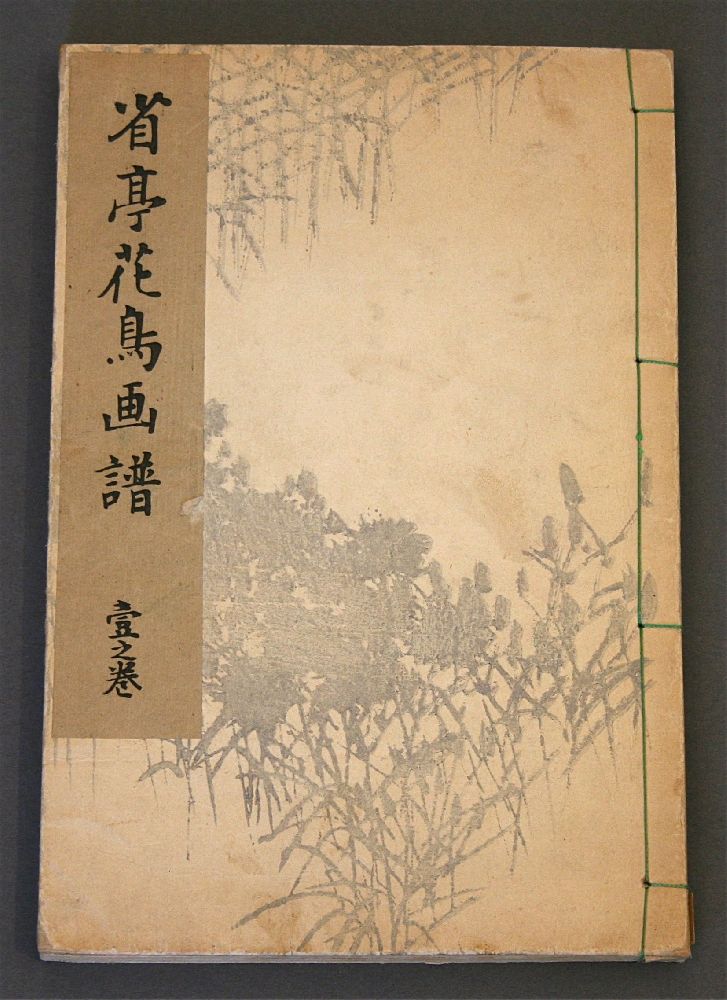

Title: Antique Japanese Woodblock Art Book 22 Prints By Artist Ohara Koson
Shipping: $39.00
Artist: N/A
Period: 19th Century
History: N/A
Origin: N/A
Condition: Excellent
Item Date: 1890 to 1910
Item ID: 5785
A wonderful opportunity to own a scarce book rarely seen in the marketplace! Ohara Koson is considered by many to be the foremost 20th century designer of bird and flower prints, or kacho-e. His early woodblock prints are notable for their muted colors, long narrow formats, and small margins. This wonderful 19thc original Japanese woodblock book by the artist Ohara Koson (1877-1945) the book is made in a hand made format there are 22 prints in the book. Each print is signed by the artist. The condition is perfect. This elegant original piece of 19thc Japanese art would be a treasured addition for any collector of Japanese woodblocks. This particular artist's work is quite collectable. This Japanese print artist should be added to your collection of fine art. Koson was born with the name Ohara Matao in the northern city of Kanazawa. He studied Shijo school painting with the artist Susuki Kason and during this time, he took the artist's name Koson, perhaps as a variation on his teacher's name. Around the turn of the century, Koson took a teaching position at the Tokyo School of Fine Arts where he encountered Ernest Fenollosa, an American with a passion for Japanese art and culture. Fenollosa was the curator of Japanese art for the Boston Museum of Fine Arts and had previously lived in Japan. He persuaded Koson to send a large number of bird and flower paintings to the United States where there was a growing interest in traditional Japanese art. In 1912, Koson changed his artist's name to Shoson and decided to dedicate his energies entirely to painting. However many people believe that he continued to design prints after 1912, still using the name 'Koson'. After the catastrophic 1923 earthquake and resulting fire, the woodblock print industry was reeling. The shin hanga publisher, Watanabe Shozaburo, reopened in 1924 and recruited several of Japan's most accomplished artists, including Shoson, to help rebuild his print business. Watanabe began publishing Shoson's designs in 1926. These prints, published in both oban and otanzaku sizes, use much brighter colors than the earlier 'Koson' prints. When Japanese scholars wanted to study Shoson's prints in the 1970s, they had to import his prints from the United States. Shoson continued to work with Watanabe throughout the 1930's and his prints were displayed at both of the Toledo exhibitions in 1930 and 1936. Shoson also worked with the publisher Kawaguchi & Sakai during this time. He used the name 'Hoson' on prints published by Kawaguchi & Sakai. As World War II began to escalate, materials were rationed and most printmaking was curtailed. Ohara Shoson died in 1945 at the age of sixty-eight. His kacho-e prints continue to be appreciated as among the finest examples of animal and botanical portraiture produced by the shin hanga movement. All of the art is edited and chosen by us for its high quality and workmanship before posting. We are committed to enhancing our customer’s lives by discovering creating, and pointing out only the best art we can find in the world today. We Are Taste-Makers, Art Advisers, Consultants & Publishers of the Greatest Art Stories. Our job is to be intermediaries between buyers and sellers. We are vetting for high end art patrons. We are determined to catalog the world's most exceptional art and share it with everyone.
Link: http://en.wikipedia.org/wiki/Ohara_Koson
Ohara Koson, Kanazawa 1877 – Tokyo 1945) was a Japanese painter and printmaker of the late 19th and early 20th centuries, part of the shin-hanga ("new prints") movement.
He was born Ohara Matao; it is thought that he started training in painting and design at the Ishikawa Prefecture Technical School in 1889–1893. He also studied painting with Suzuki Kason (1860 – 1919), although accounts differ on whether this happened during his school years or after he moved to Tokyo in the middle to late 1890s.
In Tokyo, he produced some woodblock triptychs illustrating episodes of the Russo-Japanese War, but most of his production was prints of animals (kachō-ga). He worked at first with publishers Akiyama Buemon (Kokkeidō) and Matsuki Heikichi (Daikokuya), signing his work Koson. Starting around 1926, he became associated with the publisher Watanabe Shōzaburō, and signed his work Shōson. He also worked with the publisher Kawaguchi, signing his works Hōson.
Through his association with Watanabe, Ohara's work was exhibited abroad, and his prints sold well, particularly in the United States. He was active designing prints until at least 1935, and died at his home in Tokyo in 1945.